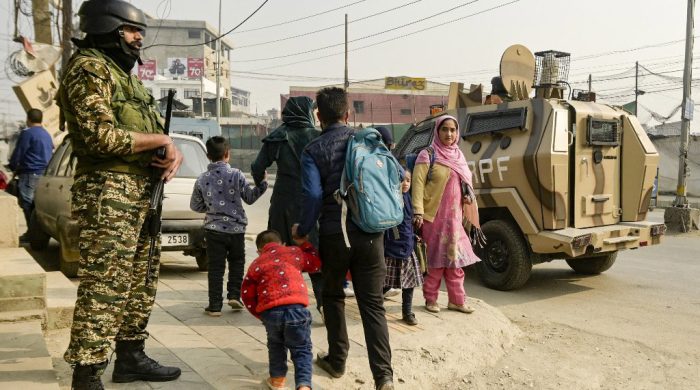13 killed as nor’westers batter coastal districts

- Update Time : Monday, April 8, 2024
- 25 Time View

At least 13 people were killed, and several hundred families, mainly in coastal southern and southwestern Bangladesh, became homeless after a series of nor’wester thrashed seven districts, destroying almost everything in their paths.
The nor’westers came without any warning on Sunday morning, with towering black clouds turning the morning skies dark as night, causing heavy wind, lightning, and hailstorms.
The storms destroyed several thousand houses, uprooted thousands of trees and scores of electric poles, and left roads littered with tree branches and debris blocking the movement of vehicles.
Hundreds of thousands were left out of electricity supply following the storm that lasted from 15 minutes to half an hour, also causing huge damage to crops.
The loss of lives and property by nor’wester, which is a characteristic of the three-month-long pre-monsoon season lasting from March to May, exposed the lack of preparedness of Bangladesh’s Met Office to deal with the destructive natural phenomenon.
‘The storm appeared like a tornado barreling its way through two upazilas in Tazumuddin and Lalmohan, affecting at least 7,500 people,’ said SM Delwar Hossain, the district relief and rehabilitation officer in Bhola.
The DRRO confirmed two deaths in the storm and damage to several hundred houses, including many houses damaged completely in the storm that blew away roofs of corrugated iron sheets and flew away trees, eventually dumping them on houses.
Manpura Island was the worst hit, with approximately 600 houses damaged in the storm, said the Department of Disaster Management.
Sunflower and vegetable fields lie in ruins in Bhola, particularly in Lalmohan, the DRRO said.
The DDM confirmed 11 deaths in seven districts – three in Jhalakathi, two each in Bhola and Patuakhali, and one each in Khulna, Netrakona, Pirojpur, and Bagerhat.
Seven of the deaths were caused by lightning, while four others died after being crushed under the trees, in a mudslide, or being flown away by the wind. The DDM did not immediately disclose the identities of the deceased.
New Age correspondents in Barishal and Jhalakathi reported two additional deaths.
The deceased in Patuakhali have been identified as Ratul, 14, and Sufia Begum, 75, reported New Age correspondent in Barishal, adding that the storm raged between 10:30am and 11:00 am.
The deceased in Pirojpur has been identified as Ruby Begum, 22, a resident of Morichal village of Shariktala union in Sadar upazila, and Anil Pal, 80, a resident of North Ranipur village of the same union.
Anil was blown away by the wind while he was returning home, and his body was found floating in a local canal.
All road communications in Pirojpur districts have been cut off after the storm.
New Age correspondent in Jhalakathi reported that the deceased have been identified as Helena Begum, 40, a resident of North Talgachia village of Kathalia upazila; Minara Begum, 35, a resident of Mirzapur village of Sheikher Hat union in Jhalkathi Sadar upazila; Mahia Akhtar Ishana, 11, a resident of Ichalia village of Ponabalia union; and Rahul Amin, 55, a resident of Rajapur union.
The storm took place at 10:30am, damaging scores of houses as well.
Bagerhat district’s DRRO said that a man named Ariful Islam, 32, died in the storm around 10:00am at Char Chukanur village in Kachua upazila.
The United News of Bangladesh reported that at least 34 electric poles were uprooted by the storm, leaving the power supply in Bagerhat in a mess as 4 lakh people were left without electricity.
One hundred thatched houses were damaged while a number of trees were uprooted when the nor’wester swept different parts of the district, including Sadar, Kachua, Rampal, Fakirhat, Sarankhola, and Morrelganj upazilas, around 10:00am, reported UNB.
Netrokona district’s DRRO, Muhammad Ruhul Amin, confirmed one death from lightning without releasing the identity of the deceased.
Nor’wester is caused when dry westerlies meet warm and moisture-prone southerlies blowing from the Bay of Bengal.
Locally known as Kal-Baishakhi, nor’wester blows in a northwesterly direction between March and May, when the land surface temperature rapidly rises.
Nor’westers disappear with the onset of the monsoon in June.
Nor’westers have struck Bangladesh since the beginning of March this year.
It caused severe damage to property in Sylhet a week ago, causing a hailstorm that locals described as unprecedented.
The Bangladesh Meteorological Department warned that nor’wester might return today across Bangladesh, including Dhaka.
‘Deterministic forecast of nor’wester is possible 30 minutes before a nor’wester strikes, but there is no way of effectively disseminating such forecast at the moment,’ meteorologist Monowar Hossain told New Age.
The clouds that brought Sunday’s nor’westers rose far above 10,000 feet into the sky, he said, explaining that a hailstorm occurs when clouds reach a temperature -60C.
The severe heat wave that gripped large areas in Bangladesh on April 6 retreated following Sunday’s rain.
A mild heat wave swept Rajshahi and Dinajpur on Sunday, with the country’s highest temperature of 36.7C recorded in Rajshahi.
The country’s highest rainfall of 29 mm in the 24 hours until 6:00pm was recorded in Satkhira.
The BMD said that the days might get warmer over the next few days.
Nor’westers provided a momentary respite to the severe power shortage, which is likely to return with temperatures rising today.

























